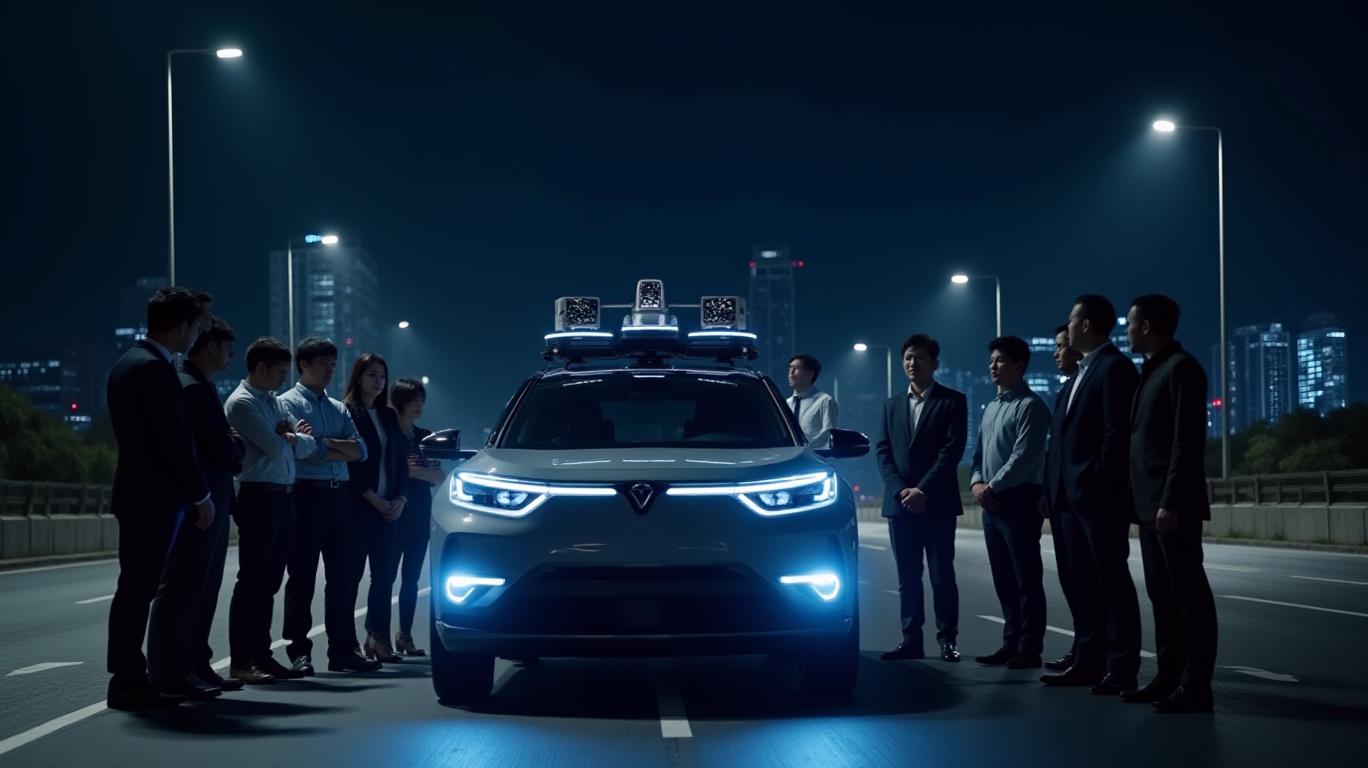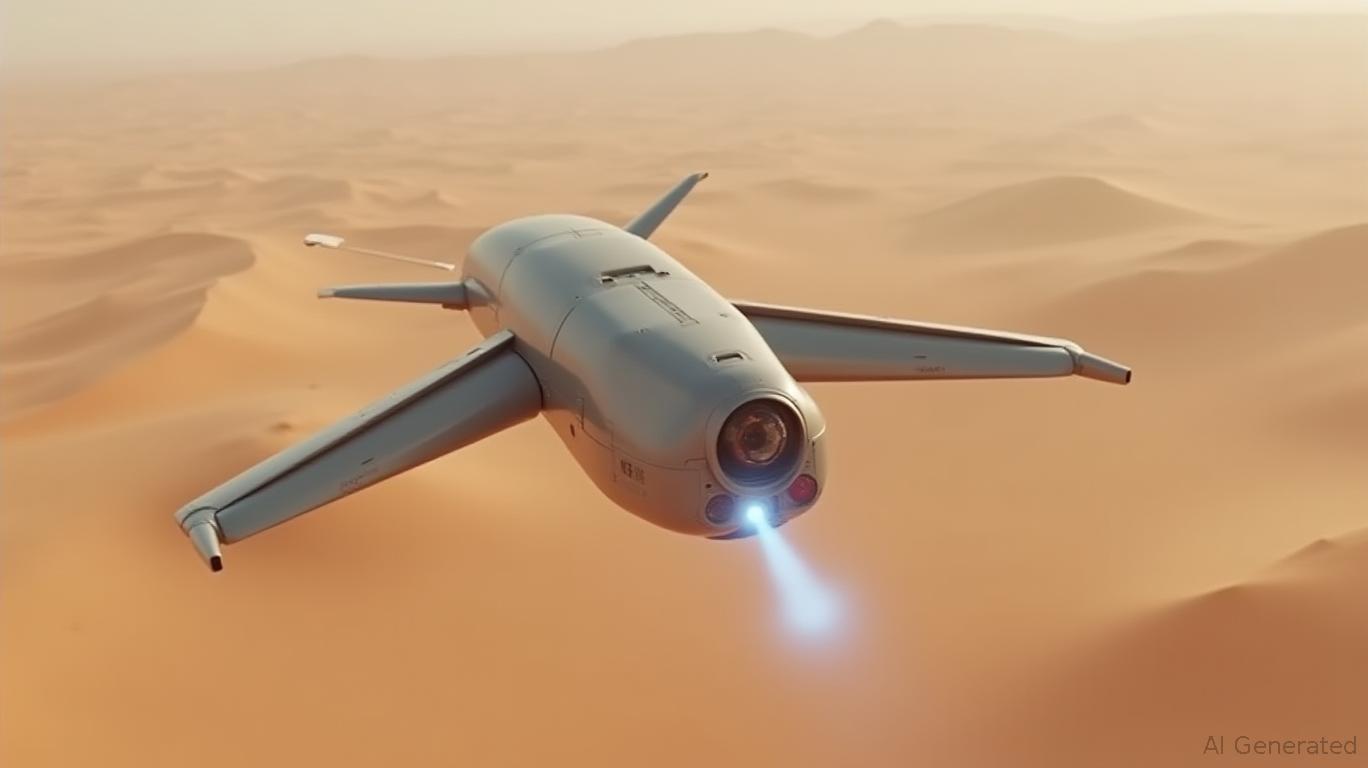Hesai’s Infinity Eye Lidar: A Game-Changer in Autonomous Driving, but Risks Linger
Hesai Group, a Chinese lidar pioneer, has unveiled its Infinity Eye Lidar Solution, a groundbreaking system designed to power autonomous driving from Level 2 (ADAS) to Level 4 (full autonomy). This multi-configurable platform combines cutting-edge technology with mass production readiness, positioning Hesai to capitalize on the rapidly expanding autonomous vehicle market. However, the company’s ascent is shadowed by recent allegations of financial misconduct and military ties, raising critical questions for investors.

The Technical Breakdown: A, B, and C Configurations
Hesai’s Infinity Eye offers three tailored configurations:
- Infinity Eye A (L4 Autonomy):
- Uses four AT1440 ultra-high-definition lidars (1,440 channels, 300m range @10% reflectivity) and four FTX blind-spot lidars (180°×140° field of view).
- Delivers 34 million points/second, 45× the density of mainstream lidars, enabling precise detection of obstacles in urban environments.
Targets robotaxis and autonomous trucks, with mass production slated for late 2025.
Infinity Eye B (L3 Conditional Autonomy):
- Features the ETX ultra-long-range lidar (400m range, 0.05° resolution) paired with FTX units.
Optimized for highway autonomy, with mass production beginning late 2026.
Infinity Eye C (L2 ADAS):
- Uses the compact ATX lidar (200m range, 256 channels), designed for affordable mass-market vehicles.
- Already in production since Q1 2025, with 50,000+ units delivered and adoption by 11 OEMs, including BYD and Changan.
Market Dominance and Competitive Edge
Hesai’s 2025 Q1 market share surged to 28% globally, up from 15% in 2024, thanks to cost-efficient solid-state lidar and strategic partnerships. Its AP/QT series captured over 60% of new ADAS contracts in China. In contrast:
- Luminar (LMNR): Fell to 18% share due to high prices and slower adoption.
- Velodyne (VLDR): Declined to 12%, hindered by legacy rotating lidar designs.
- Innoviz (INVZ): Dropped to 10%, struggling with supply chain issues.
Hesai’s Fourth-Gen IPE platform processes 24.6 billion samples/sec, enabling unmatched reliability in all weather. Its vertical integration—85% component commonality across products—supports 2 million units/year production, far exceeding rivals’ capacity.
Financial Momentum and Production Ambitions
Hesai projects 2025 revenue of $411–480 million, a 44–69% jump from 2024. Gross margins remain robust at 45%, with non-GAAP net income expected to soar 25–35× to $35–50 million. Key drivers include:
- ATX mass adoption: Powering affordable ADAS in vehicles like BYD’s “God’s Eye” system.
- Robotics growth: The JT series (launched at CES 2025) shipped 20,000 units in its first month, targeting delivery and agricultural robots.
- Global expansion: A $500M European plant aims to produce 500,000 units/year by 2026.
The Elephant in the Room: Blue Orca’s Allegations
On March 18, 2025, short-seller Blue Orca Capital accused Hesai of:
- Military ties: Providing lidar to Chinese military vehicles, violating U.S. regulations.
- Financial fraud: Overstating revenue by 48–67% via a “break fee” from a terminated customer.
- Questionable partnerships: Casting doubt on a rumored Mercedes-Benz deal, which insiders sold stock ahead of.
The report triggered a 8–10% stock drop, with shares trading as low as $10.50 in April 2025. Legal battles loom, with multiple class-action lawsuits filed over alleged securities fraud. Hesai denies all claims but faces a credibility crisis.
Conclusion: A High-Reward, High-Risk Play
Hesai’s Infinity Eye is undeniably a technical marvel, addressing critical gaps in autonomous driving’s resolution, range, and scalability. Its 2025 production targets, partnerships (e.g., Kargobot’s autonomous trucks), and robotics growth suggest $1.2–1.5 million units shipped, fueling revenue expansion. The lidar market’s 65% YoY growth (to $859 million in 2024) and $3.8B valuation by 2030 further support its potential.
However, investors must weigh this upside against significant risks:
1. Blue Orca fallout: Legal costs, reputational damage, and potential regulatory penalties could derail growth.
2. Execution risks: Scaling production to 2 million units/year amid supply chain and geopolitical challenges.
3. Market competition: Luminar and Innoviz are innovating, while Velodyne pivots to trucking.
For now, Hesai remains a “buy” with a caveat: its technology is world-class, but investors must monitor the Blue Orca investigation and stock volatility closely. At its current valuation (P/S 5.83), the stock may reflect these risks—but a successful defense and market traction could unlock massive upside.
Final Verdict: Hesai is a key player in autonomous tech, but its future hinges on resolving its legal battles and maintaining operational momentum. Proceed with caution, but keep an eye on this disruptor.


_442a2dcc1749832873286.jpeg)
_e68fac6d1749831664430.jpeg)





